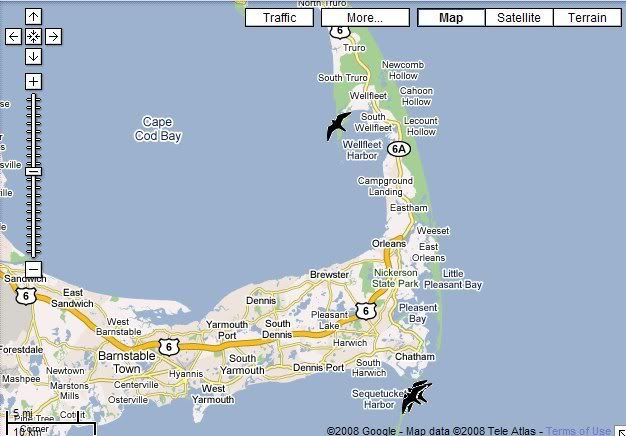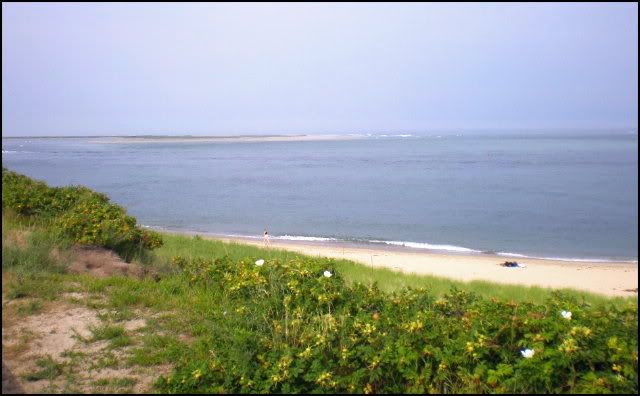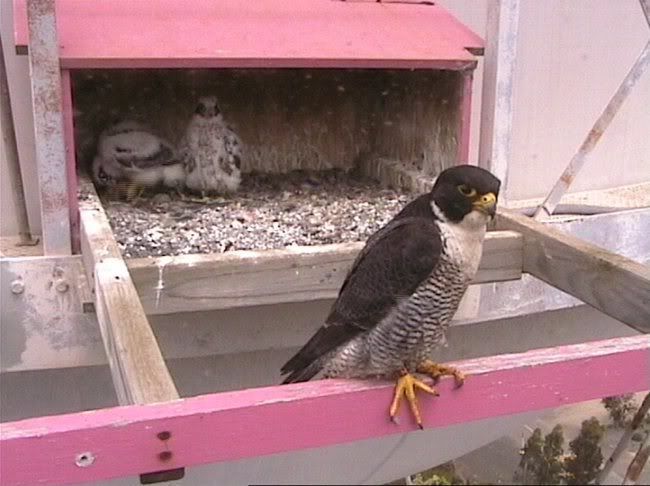
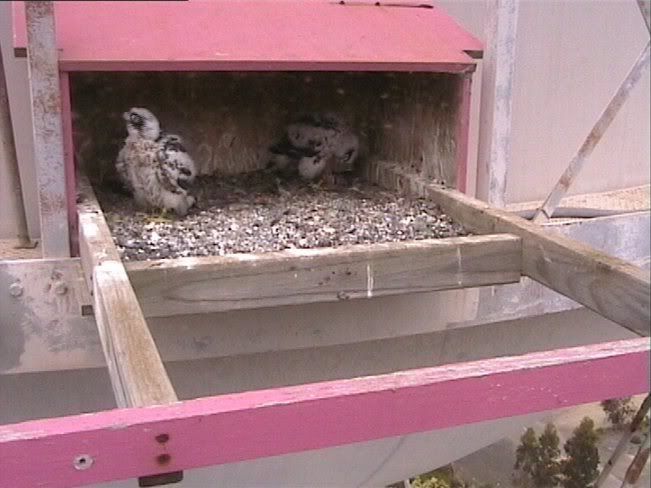


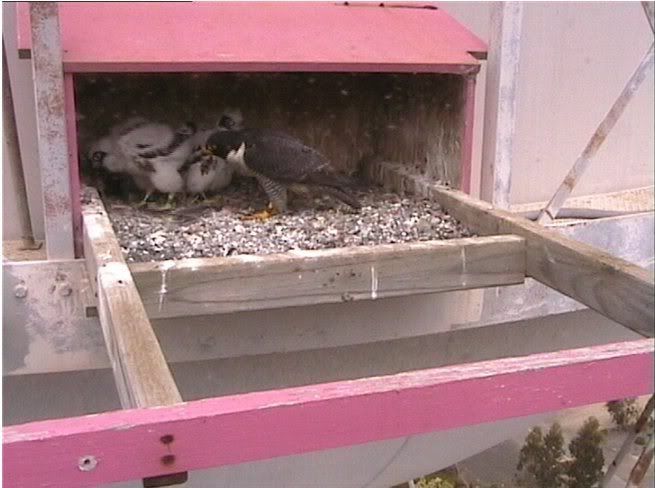
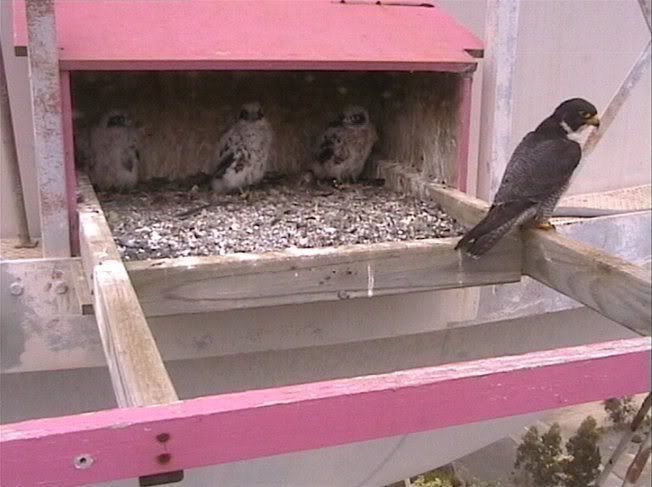
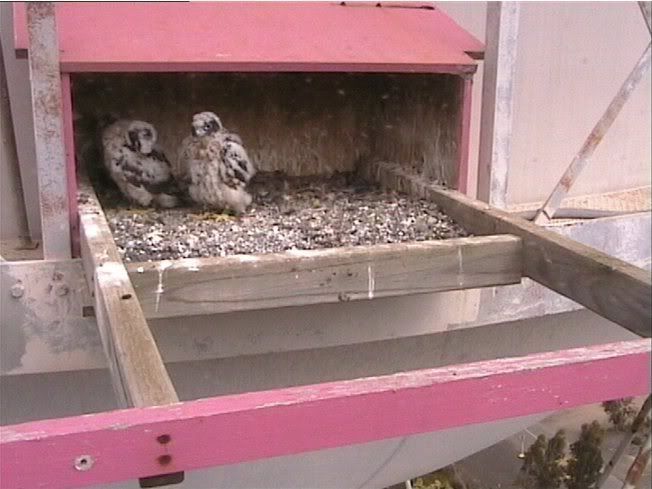
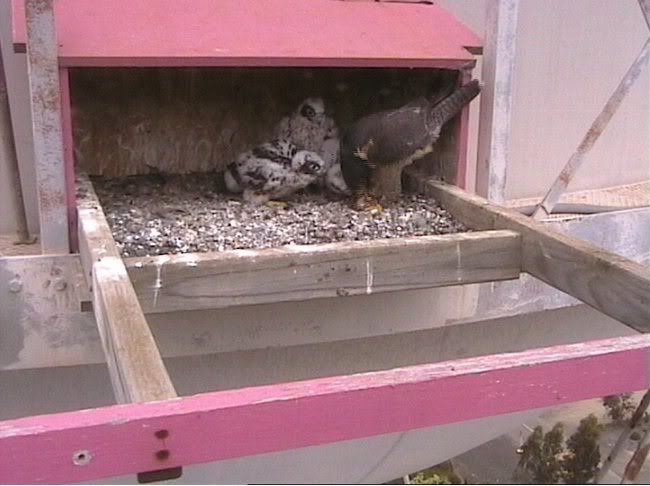
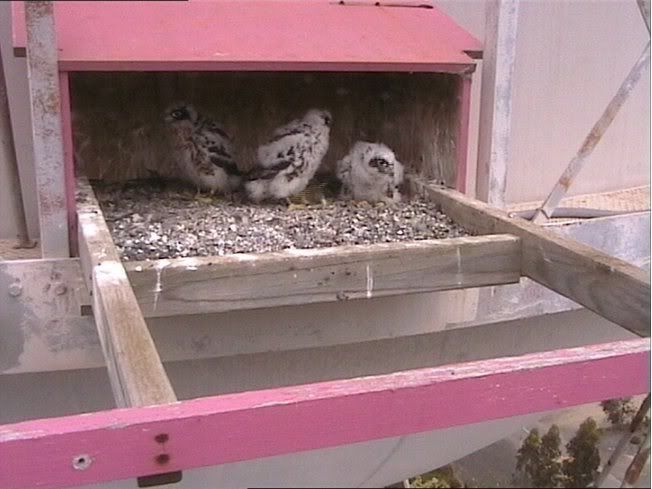

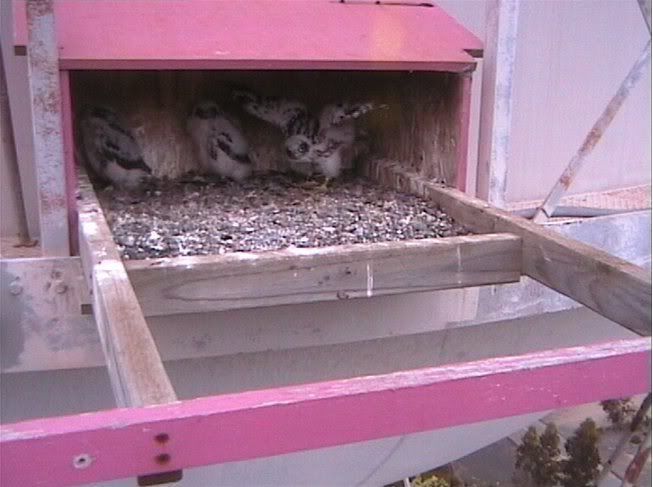
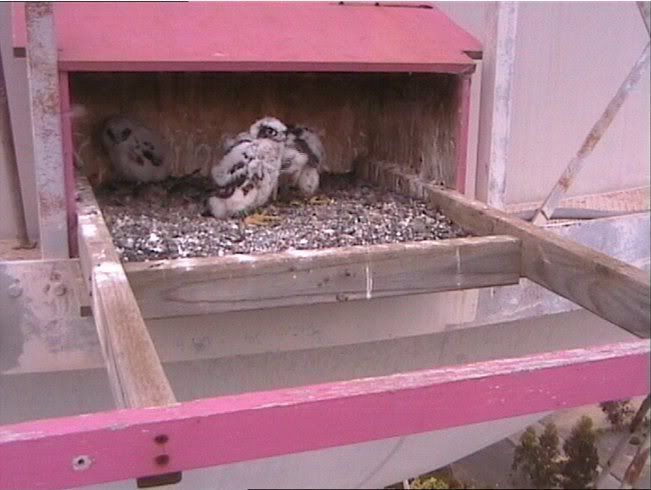

The chicklets are 4 weeks old today. It's going so fast! They can stand on their own 2 feet and are exploring the nestbox. They even come all the way to the edges of the nestbox and are glooming around and down. These are very good excersises for the eyes to learn how to estimate depth and distance.
On the pics we all can see how often they are flapping with their growing wings. They are training, and working out their flight muscles. When they do this we are able to see how far the primaries and secundaries have grown already. The skin under the wings however is stil mostly covered with down, or even bare. The coverfeathers here are the last ones to grow. In the 2 eldest eyases we can see very well already the honeycolored tips on the darkbrown tailfeathers.
In this 4th week they will change very quickly indeed. Today they are still covered with down. At the end of this week they will have changed into darkbrown juvs. The eldest male is showing us how his honey colored brest feathers are shining through. The area on the head bare of down also continues to expand They are nearly full-grown in terms of body size and weight.
They spent their days sleeping and preening. We have seen several times how they preen eachotheres feathers. This is very normal behaviour in peregrine eyases. Of course they do work-out a lot. The flight feathers need a lot of training. And food is still the main course!
Every times it is amazing how rapidly they transfprm in this fourth week of their life. In 3 weeks times they will have fledged. So let's all enjoy the growth of these 3 exceptional baby birds of prey into mighty juveniles.


